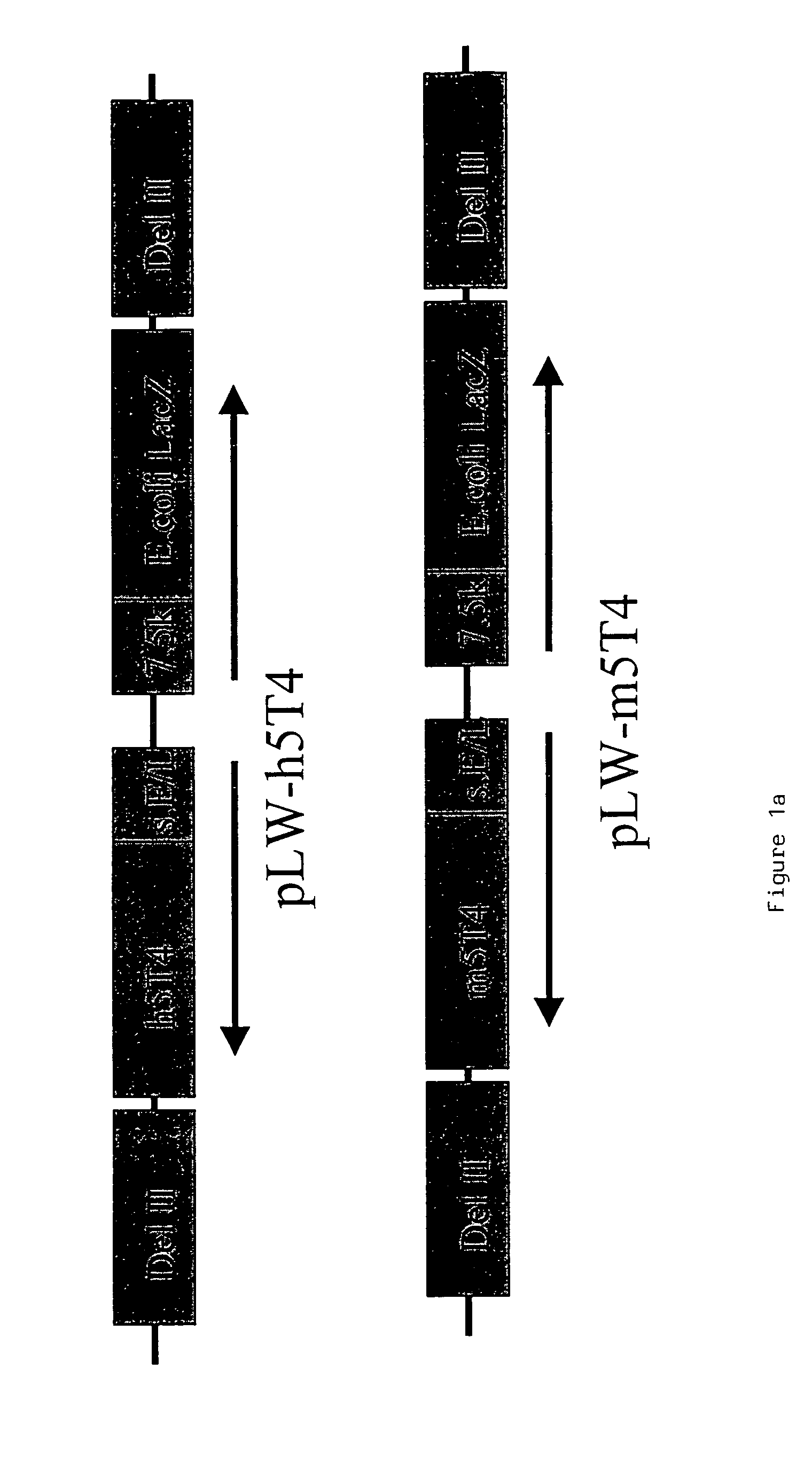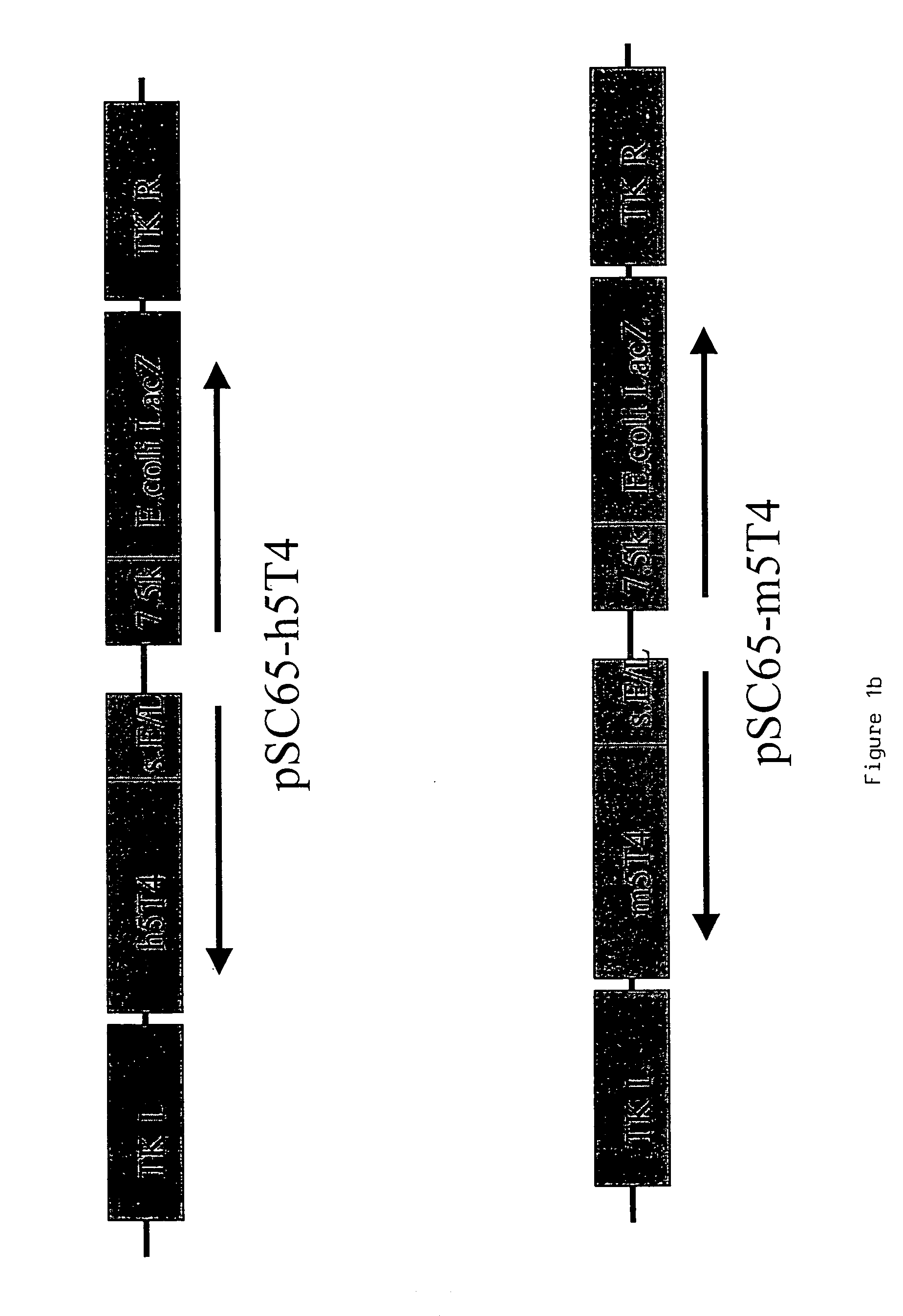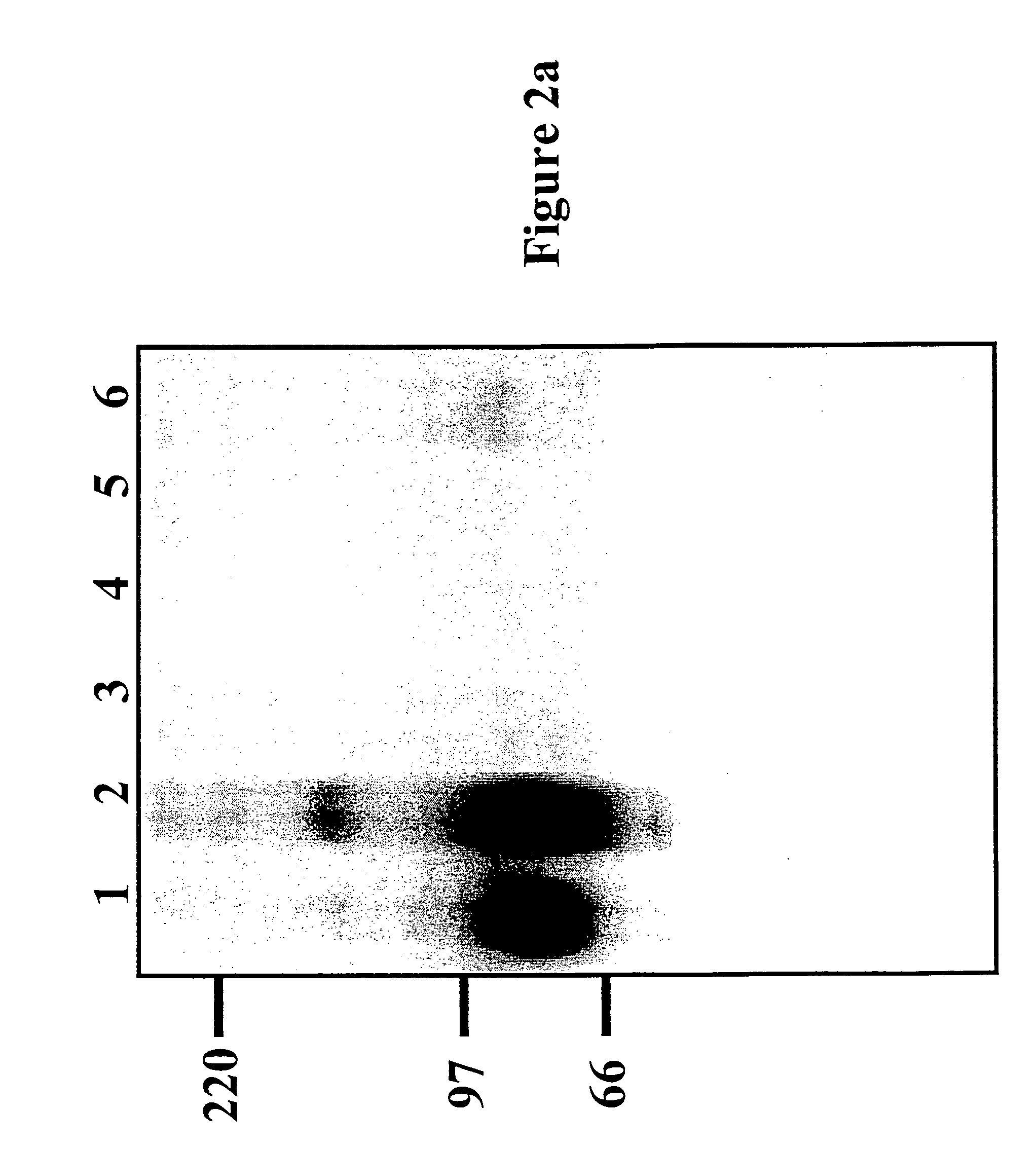Polypeptide
a polypeptide and antigen technology, applied in the field of polypeptides, can solve the problems of inability of the immune system to differentiate the tumour antigen on the tumour cell, the non-mutation of associated antigens, and the inability to induce therapeutic t cells to these antigens, so as to enhance the ctl response to an antigen, increase the longevity of high-level ctl, and reduce the effect of lytic activity
- Summary
- Abstract
- Description
- Claims
- Application Information
AI Technical Summary
Benefits of technology
Problems solved by technology
Method used
Image
Examples
example 1
Construction of Recombinant Poxvirus Vectors
[0211]The highly attenuated strain MVA is derived from the replication competent strain Ankara and has endured over 570 passages in primary chick embryo fibroblast cells. MVA replication was initially thought to be restricted to CEF cells as only minimal replication in mammalian cells was reported. However, further analysis has shown that Baby Hamster Kidney cells (BHK-21) are able to support high titre production of MVA. MVA may thus be grown on BHK-21 or primary CEF cells (Carroll & Moss (1997) Virology 238:198–211).
[0212]To prepare CEF cells, 10 day old chick embryos are gutted and limbs and head are removed before being minced and trypsinised in a solution of 0.25% trypsin and incubation at 37° C. The cell suspension is filtered through a course filter mesh and cells are washed and concentrated by centrifugation at 2000 rpm in a Sorvall RC-3B at 1500 rpm for 5 mins. Cells are suspended in MEM containing 10%...
example 2
Construction and Characterisation of Recombinant Virus Vectors Expressing 5T4
[0217]Murine and human 5T4 genes are cloned into WR (pSC65) (Chakrabarti et al., (1997) Biotechniques 23:1094–7) and MVA (pLW22) transfer plasmids to allow homologous recombination into targeted regions of the respective viral genomes.
Recombinant MVA and WR Expressing Human and Murine 5T4
[0218]The 1.4 kb murine and human 5T4 (supplied by P. Stern Paterson Institute Manchester) genes are excised from pBSII-m5T4 (pBluescript (Stratagene) containing the 5T4 cDNA) and pBSII-h5T4 (Myers et al., (1994) JBC 269:9319–9324) respectively by Eco RI and Bam HI restriction digestion. The fragments are blunt ended by “filling in” with dNTPs and DNA polymerase. The blunt ended fragments are cloned into the PmeI site of pLW22 (an MVA transfer plasmid, consisting of an early late promoter (Chakrabarti et al., 1997) upstream of an MCS. Adjacent is a VV 7.5 Kb LacZ cassette, for detection of recombinant virus; see FIG. 1a), a...
example 3
Animal Models to Illustrate Immunological Cross Protection of Mouse 5T4 with Human 5T4.
[0224]To determine if the 5T4 gene product from one species can induce immunity to 5T4 in another species, the recombinant poxviruses are tested in murine tumour models. The mouse models are based on CT26, a chemically induced adenocarcinoma of BALB / c origin (Brittain et al., (1980) Cancer Res. 40:179–184), and on B16, a melanoma line derived from C57 B6 mice. Both the CT26 line and B16 are stably transformed to express human and murine 5T4. Mice are injected I.V. (to induce lung nodules, CT26) or subcutaneously (CT26 and B16) to make single mass subcutaneous tumours.
[0225]Groups of 7 BALB / c mice were inoculated three times IV or IM with 1×107 pfu of MVA-h5T4 (here the 5T4 antigen is called OBA1) construct on days 0, 21 and 42. Mice were then challenged IV with 5×105 tumour cells that were stably transfected with human 5T4. 14 days after challenge mouse lungs were removed and lung nodules counted....
PUM
| Property | Measurement | Unit |
|---|---|---|
| Tm | aaaaa | aaaaa |
| temperature | aaaaa | aaaaa |
| concentration | aaaaa | aaaaa |
Abstract
Description
Claims
Application Information
 Login to View More
Login to View More - R&D
- Intellectual Property
- Life Sciences
- Materials
- Tech Scout
- Unparalleled Data Quality
- Higher Quality Content
- 60% Fewer Hallucinations
Browse by: Latest US Patents, China's latest patents, Technical Efficacy Thesaurus, Application Domain, Technology Topic, Popular Technical Reports.
© 2025 PatSnap. All rights reserved.Legal|Privacy policy|Modern Slavery Act Transparency Statement|Sitemap|About US| Contact US: help@patsnap.com



